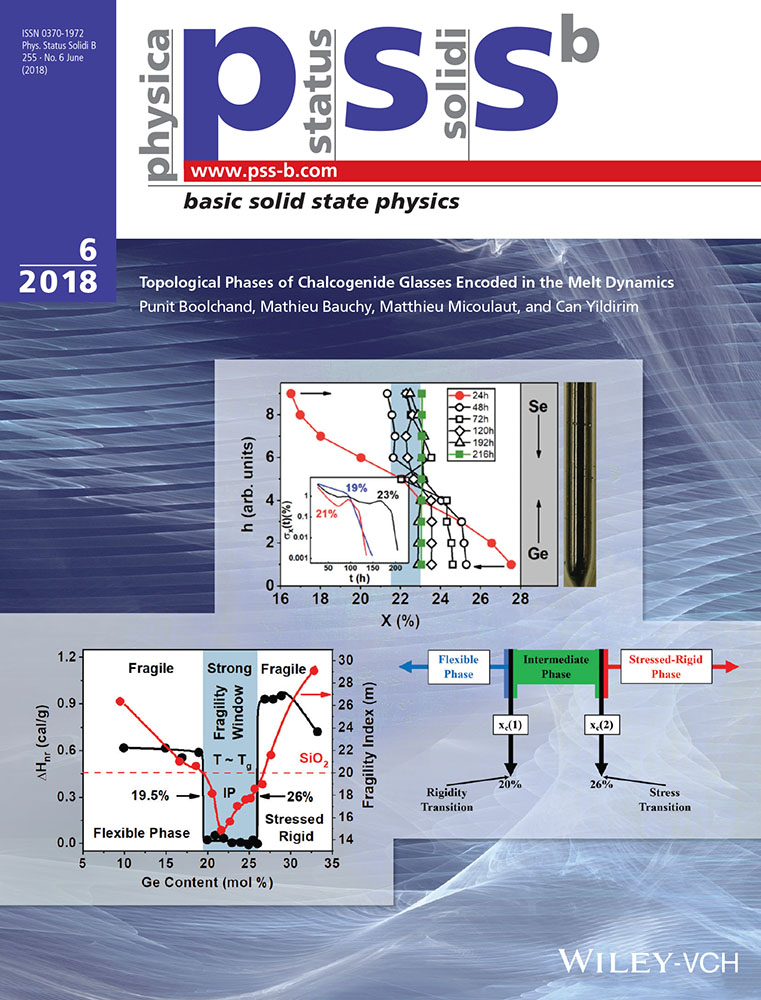EPR Study of Porous Si:C and SiO2:C Layers
Abstract
Initial porous silicon (por-Si), carbonized porous silicon (por-Si:C), and carbon-incorporated porous silicon oxide (por-SiO2:C) layers are studied by electron paramagnetic resonance (EPR) at T = 10–13 K. Scanning transmission electron microscopy and electron energy loss (EEL) spectroscopy show that por-Si:C and por-SiO2:C layers have a highly disordered structure with mixing sp2 and sp3 CC bonds. In the por-SiO2:C layers, the peak of the oxygen bonded to carbon in the form of hydroxyl groups is found in the EEL spectrum of the C K-edge region. Low-intensity signals of Lorentzian lineshape are detected in the EPR spectrum of por-Si, por-Si:C, por-SiO2:C layers. One of them is attributed to the Pb0 defect at the Si/SiO2 interface of nanocrystalline grain and the second to the silicon dangling bonds (SiDB) localized in nanocrystalline Si. The carbonization of por-Si layers and subsequent oxidation of por-Si:C gives rise to the appearance of additional EPR signals of high intensity at g = 2.0035(3) in por-Si:C and at g = 2.0030(3) in por-SiO2:C, which are assigned to carbon-related defects (CRD) and carbon clusters, correspondingly. It was found that predominant defect types in por-Si:C and por-SiO2:C layers are CRD and carbon clusters, respectively, while the spin concentration of Pb0 interface defects and SiDB is low.
Conflict of Interest
The authors declare no conflict of interest.




